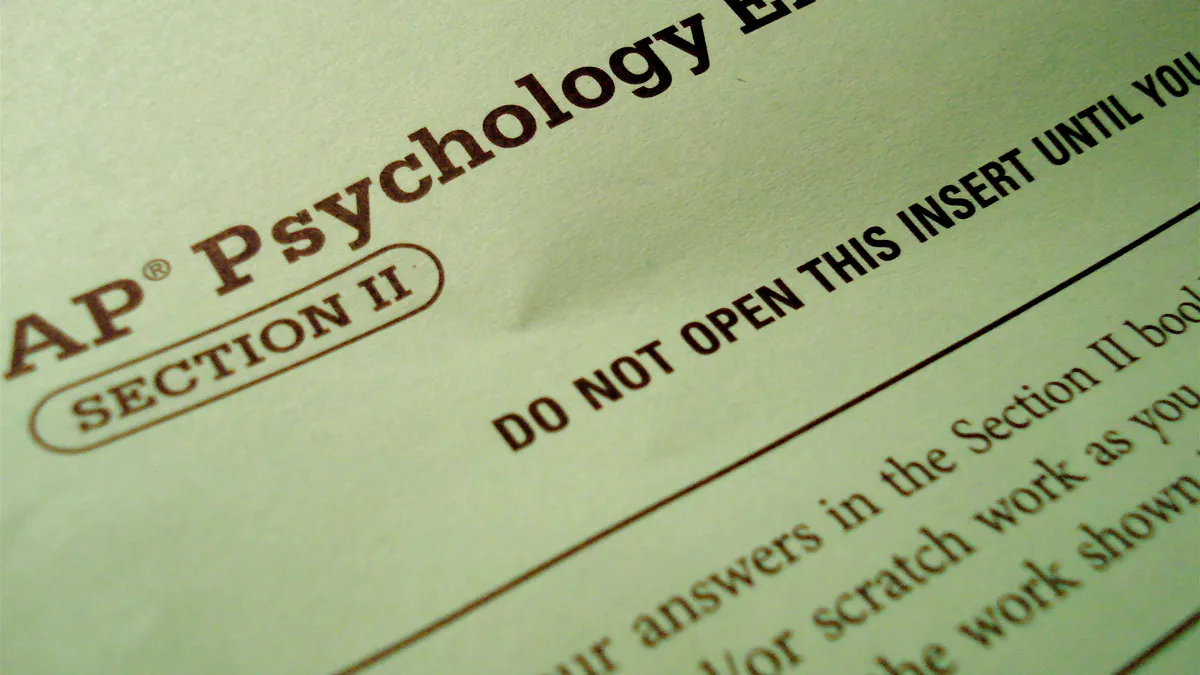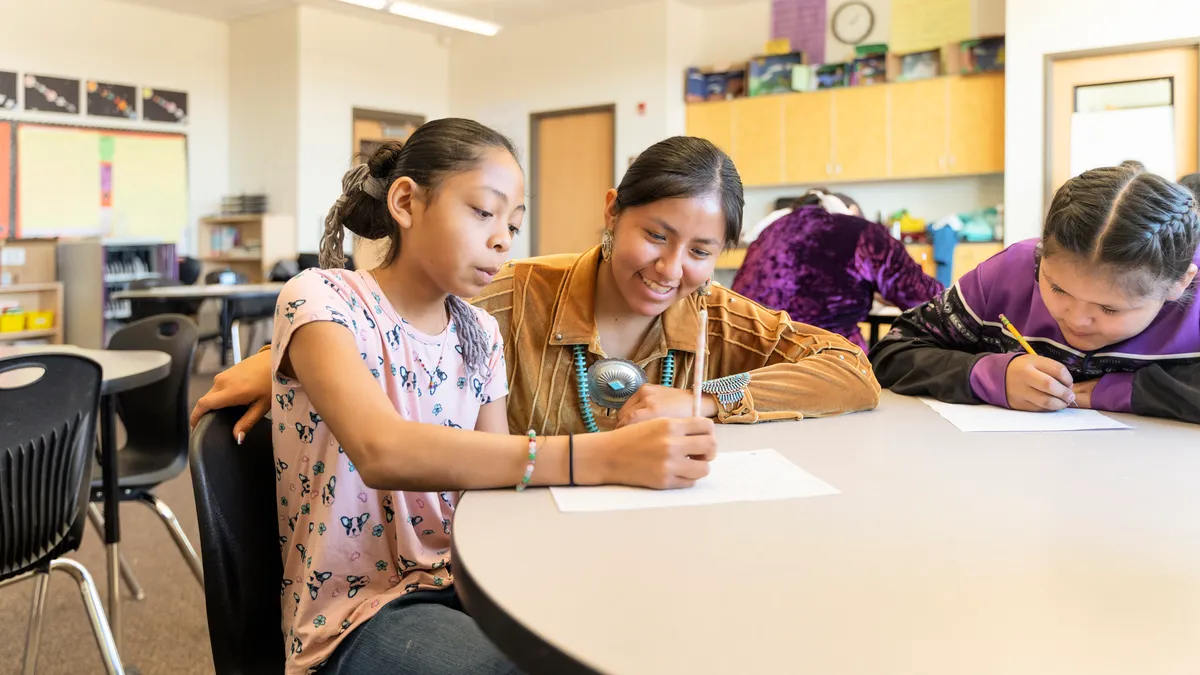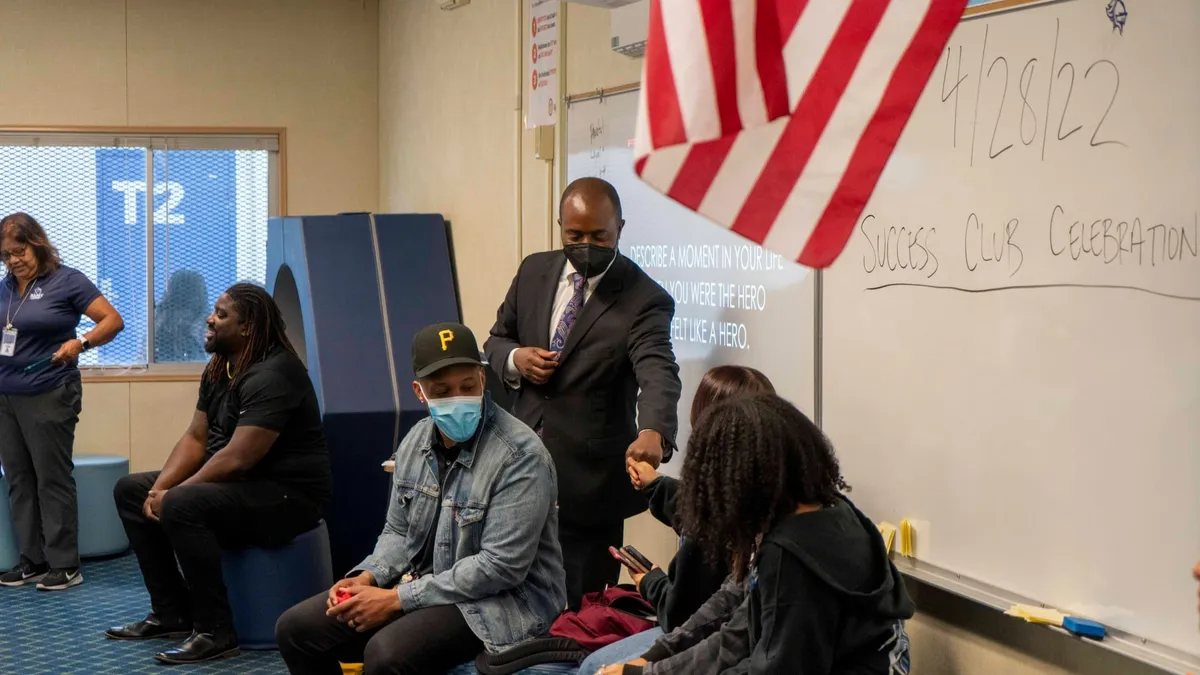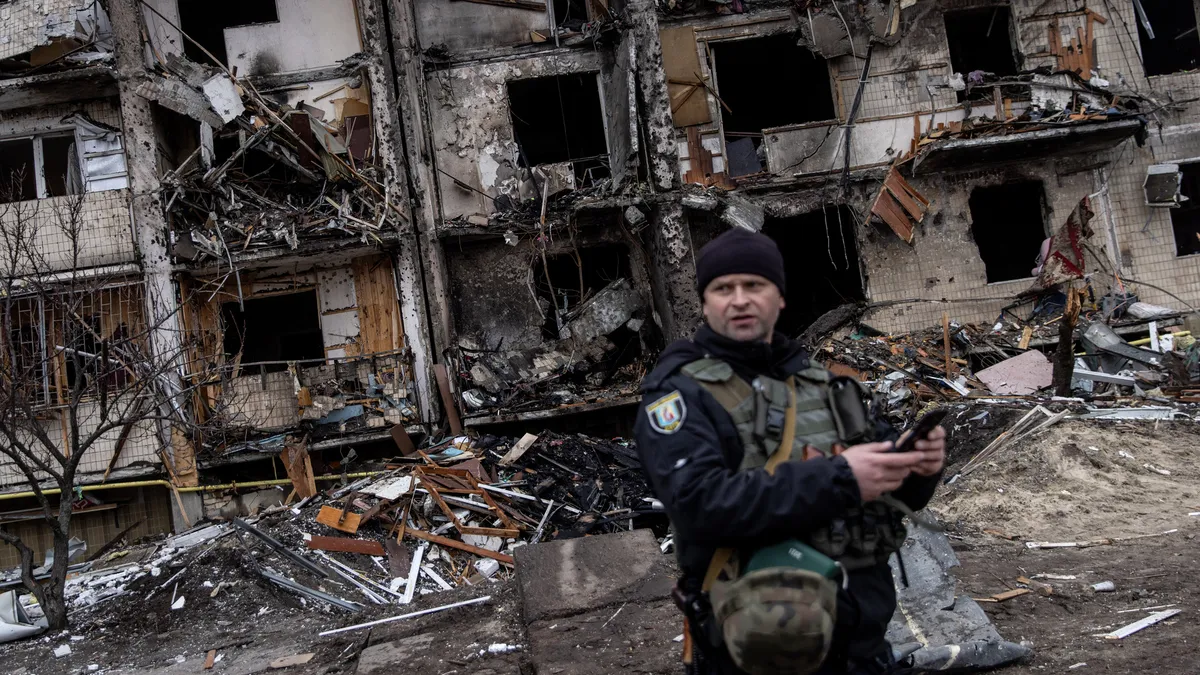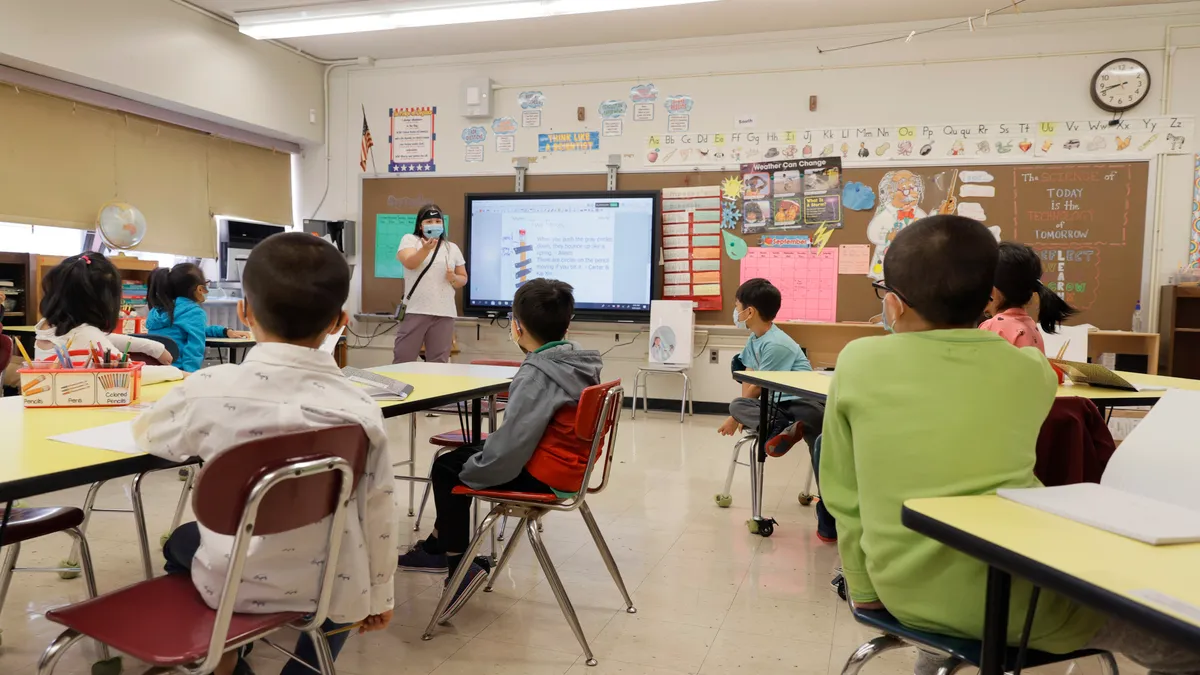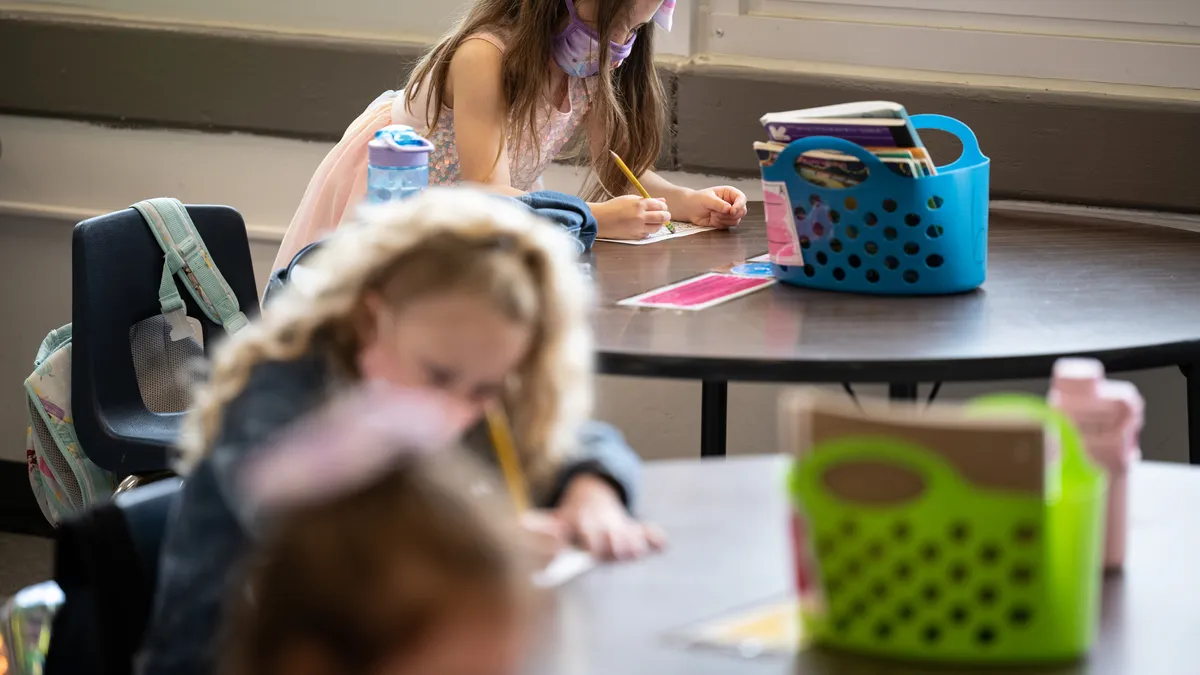A receptionist, an attendance clerk and a family liaison are among the Alief Independent School District employees answering the call to become pre-K teachers through a Relay Graduate School of Education teacher residency.
The Texas district, outside of Houston, passed a bond issue in 2015 with plans to build additions for pre-K classrooms. And with more funding available in the state for full-day pre-K, Maria Martinez, AISD’s early childhood coordinator, said leaders knew the district — which already had a partnership with Relay — would have a growing demand for pre-K teachers.
“We have been studying the research and data, and also talking to different districts,” Martinez says about full-day programs. “The day was more productive. There’s more opportunity for language development.”
Relay’s two-year model — in which prospective teachers work alongside a mentor as they complete a series of training modules — has grown in popularity alongside interest in residencies in general.
An accredited alternative teacher preparation program not affiliated with a traditional university, Relay — now with 19 campuses — promotes its emphasis on clinical teaching practice over theory and its ability to give career-switchers and those without classroom experience a “gradual on-ramp to teaching,” says Kim Underwood, Relay’s director of early-childhood education.
Applicants already have a bachelor’s degree, but, “they were looking for a pathway and a pipeline to get into teaching,” she says.
The Houston area is one of seven where Relay offers an early-childhood education residency. Relay graduates predominantly train in, and later take positions at, charter schools. But in addition to AISD, other districts hosting pre-K residents include Denver Public Schools and the District of Columbia Public Schools.
The expansion of Relay’s paid residency model to include pre-K teachers is significant for two reasons. First, residencies in general are rare in early-childhood education. The National Center for Teacher Residencies was only aware of the residency program with AppleTree, a nonprofit organization that operates public charter preschools in the District of Columbia. That residency program is a partner with Relay.
Second, Relay is giving those who want to work in early childhood a way to earn a graduate degree at a time when it’s still common to hear experts in the field debate whether a bachelor’s is necessary to be an effective preschool teacher, especially when there is still a significant pay gap between K-12 teachers and those working in early childhood.
According to the U.S. Department of Health and Human Services’ 2012 National Survey of Early Care and Education, 9% of lead and assistant teachers in center-based early-childhood programs, including those in “school-sponsored” programs, have a master’s degree. NORC at the University of Chicago is currently conducting an updated survey.
Jacqueline Joffrion, one of 10 Relay pre-K residents in AISD and one of 450 Relay early-childhood education majors nationally, was working as a substitute teacher before taking a full-time position in the district. When she went to an informational meeting about the residency program, she says she liked what she heard.
“The on-ramp, intense study, hands-on deliberate practice allows me to take this training back to my classroom for my students’ success,” she says.
Learning all of the students’ names and “working with the ones with behaviors” have been some of the biggest challenges so far, she says, adding the students had to adjust to the “constant redirecting.” But since applying the classroom management strategies she has learned through the residency, “things are so much better.”
Further expansion likely
New partnerships between Relay and school districts or charter networks tend to get a lot of attention, but the expansion of its model to include early-childhood teachers, which began in 2016-17, has gone relatively unnoticed.
Those familiar with Relay say they don’t know how its residency model has been adapted for those who want to work with young children. And several prominent early-childhood experts across the country say they are unfamiliar with Relay.
Because of its origins in the charter sector, the Relay model has had plenty of critics who argue it reinforces the “no excuses” approach to education and narrowly focuses on teachers’ ability to raise test scores.
Ken Zeichner, an emeritus professor of teacher education at the University of Washington, has been outspoken about Relay and other alternative teacher preparation models.
He warned policymakers in 2016 to be cautious about approving funding for models that “contribute to a stratified system” in which students in more advantaged communities have teachers who “complete programs in colleges and universities to become professional educators,” while students in low-income communities have teachers who “receive only more technical, narrow training on how to implement a defined set of curricular, instructional and managerial guidelines.”
And in a recent article for “Issues in Teacher Education,” Angus Mungal of the University of Texas at El Paso, writes that the federal government’s support of charter schools and alternative programs creates a climate in which Relay can continue to spread.
Underwood added that requests from community organizations for pre-K residents across Relay’s 19 campuses is also contributing to the growth of the early-childhood program.
Relay leaders say it’s natural for those in university schools of education to be skeptical of efforts to disrupt the traditional teacher education system — which is often blamed for not adequately preparing educators for the challenges of today’s classrooms.
Mungal and others also note that there has been no independent research of Relay’s programs or the success of its graduates. But Robert Pianta, dean of education at the University of Virginia, countered that the same criticism can be made of traditional teacher preparation programs, as well.
Mathematica, a Princeton, New Jersey-based research organization, began working on an evaluation of the effectiveness of graduates from Relay’s master of arts in teaching program in New York City.
“However, we were unable to obtain data on a sufficient number of these teachers to conduct a meaningful analysis,” says Matt Johnson, who was directing the project. “We decided to put the evaluation on hold, until we can work with Relay to resolve the data issues and obtain a larger sample size.”
Addressing workforce needs
Sue Russell, executive director of the TEACH Early Childhood National Center, which supports states that have a TEACH scholarship program to help early educators earn college degrees, says she’s unaware of Relay but discussed the challenges facing those entering the field without some background in early childhood.
“If you don’t have core knowledge on which to build your practice, that could be a big issue,” she says. “We certainly want teachers with degrees, but we also want teachers with degrees with early-childhood content.”
Pianta, on the other hand, gives Relay credit for focusing on the early-childhood workforce.
“We need people who are trained well — and we need more people,” he says. “There’s a lot of promise in any effort to address the workforce training needs.”
Underwood said Relay’s early-childhood residency program focuses on “purposeful play” and “learning how to structure play.” Higher education institutions — such as New York University and Bank Street College of Education in New York City — and professional groups, such as the National Association for the Education of Young Children, were among organizations that advised Relay in developing its early-childhood major.
Residents, she said, use a portfolio assessment model that collects data in the five areas of literacy, math, physical development, social-emotional development and approaches to learning, which refers to students showing curiosity and taking on challenges. To earn their master’s, the residents complete a project showing student growth in those five areas.
She adds as the residents work with their mentor teachers, they are also learning how to co-teach “because that is the model for how a strong early-childhood program runs.”
Underwood noted additional changes are expected for the program. “We are currently working with a team of five designers to revise our curriculum to include robust core-content integration for early-childhood teachers,” she said, “and reflect our priorities toward becoming an anti-racist institution.”
Claire Rubman, a psychology and child development professor at Suffolk County Community College in New York, is among experts currently working to make those revisions. Aligning with NAEYC standards, which define the early-childhood period as birth through age 8, is one change, she said, adding that her involvement suggests the model is adapting to be more "child-centered."
"All credit to Relay, they are starting back at the beginning," she says, adding that those who enter a Relay program may be "skilled in their own discipline" but it doesn't mean they can teach. Three- and 4-year-olds, she said, "think differently from us."
Martinez was among the first class of graduates to complete an early-childhood program through Relay — a one-year advanced master of arts in teaching. She says she has also seen improvements in the early-childhood program since it began, such as adding a track for district-level personnel who supervise pre-K teachers, as well as more resources like videos of exemplary teaching.
She describes one resident who has stepped in to lead instruction — in circle time and small groups — while the lead teacher is on maternity leave.
“If she wasn’t going through Relay," she said, "she wouldn’t be able to do everything she is doing."






